


The European Union (EU) is the subject of heated debates, often quite polarized between Eurosceptics and supporters of European integration. Most of these debates focus on controversial European politicians and political parties or on general values and principles - cosmopolitanism versus nationalism, for example. There is much less discussion of the actual laws and policies that the EU adopts and implements, of the regulations it drafts and of the rules it makes, although it is the rules and regulations that affect all our daily lives. Even experts on European politics will be hard pressed to provide correct estimates of the legislative productivity of the EU or to name more than a couple of recent pieces of important legislation that the EU has passed. And this goes for proponents and opponents of European integration alike.
Yet, naturally, having a good idea about what the EU does is important for forming opinions whether we like the EU or not and whether we want European integration to proceed further. This presentation focuses on one important aspect of what the EU does: legislative productivity. Measuring the legislative productivity and output of the EU is especially relevant since the EU has no army or large budget to exercise its influence, but it must rely on its laws and regulations. Hence, by looking at legislative productivity we examine the health and prospects of the EU integration project more generally.
The exploration of the legislative productivity of the EU is done visually, through a series of time series plots with some short commentary. The data for the graphs is extracted from EUR-Lex, the main EU database for access to EU law. You can find the data and details about the data collection at GitHub.
The presentation focuses on the period from 1 July 2004 to 30 June 2019 (see a presentation that covers a longer time period from 1967 till 2012 here). This includes three terms of the European Parliament (which dictate to a significant extent the rhythm of legislative production.) The starting point is after the Eastern enlargement of the EU, and the period covers the entry into force of the Treaty of Lisbon, which changed significantly the rules for making laws in the EU. The presentation focuses on the three main types of legislative acts in the EU - directives, regulations and decisions - adopted by one of the three major institutions - the Council of the EU, the European Parliament (co-legislating with the Council under the ordinary legislative procedure) and the European Commission. The data is plotted per semester rather than per year, because the European Council, which resolves many legislative negotiations, meets twice a year, and because the terms of the EP end in the middle of the year.
Ready? Let's go!
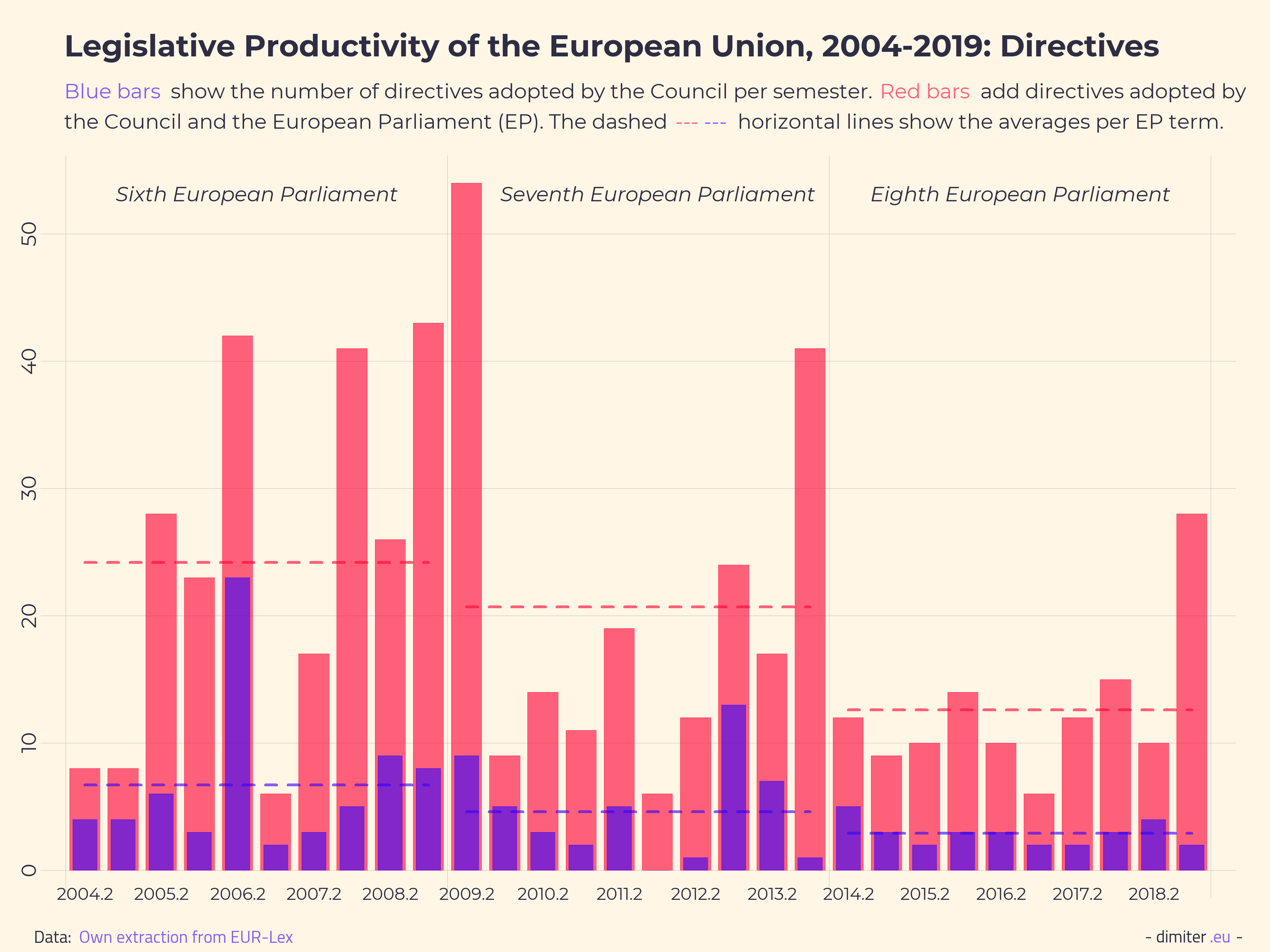
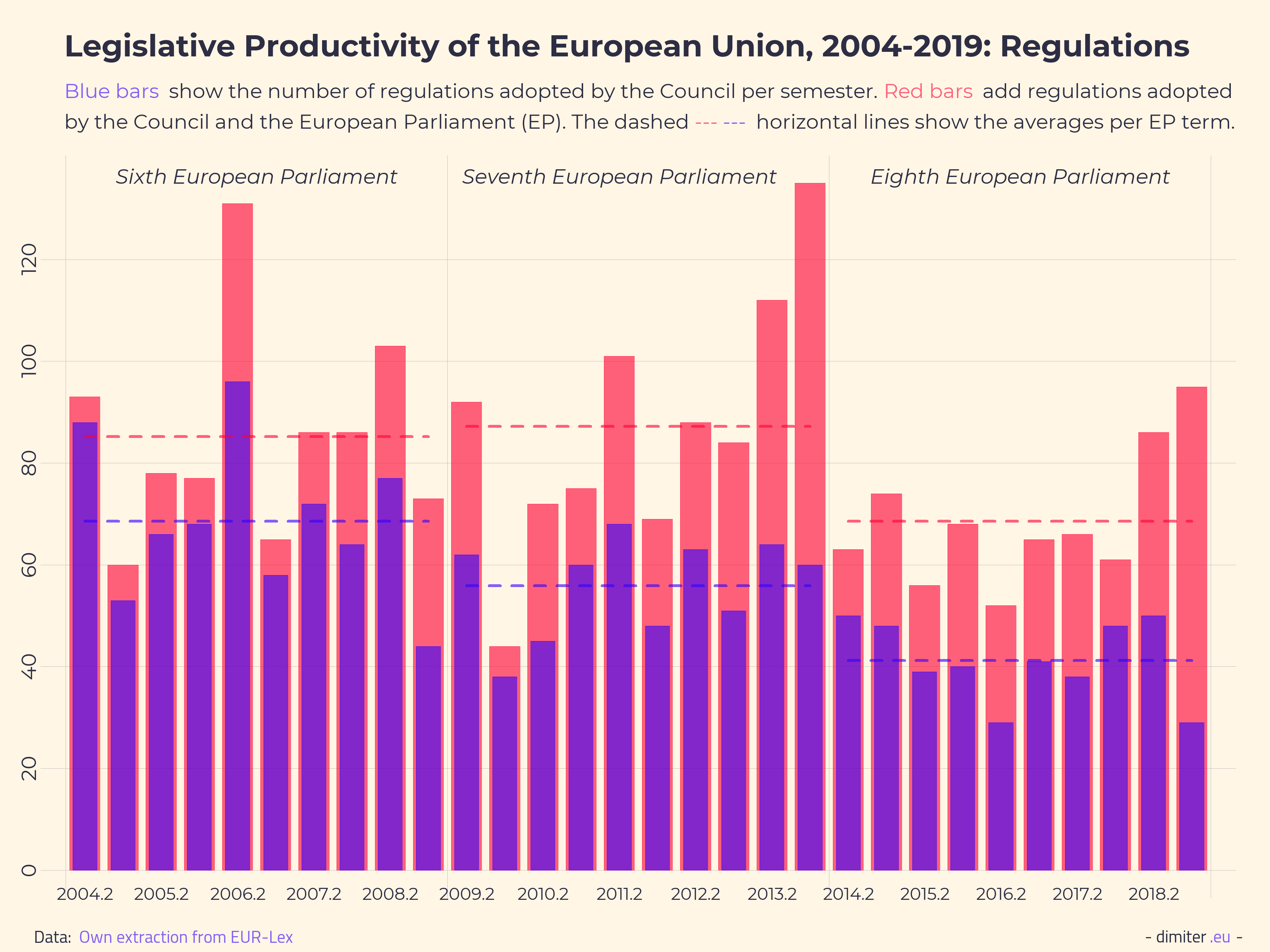
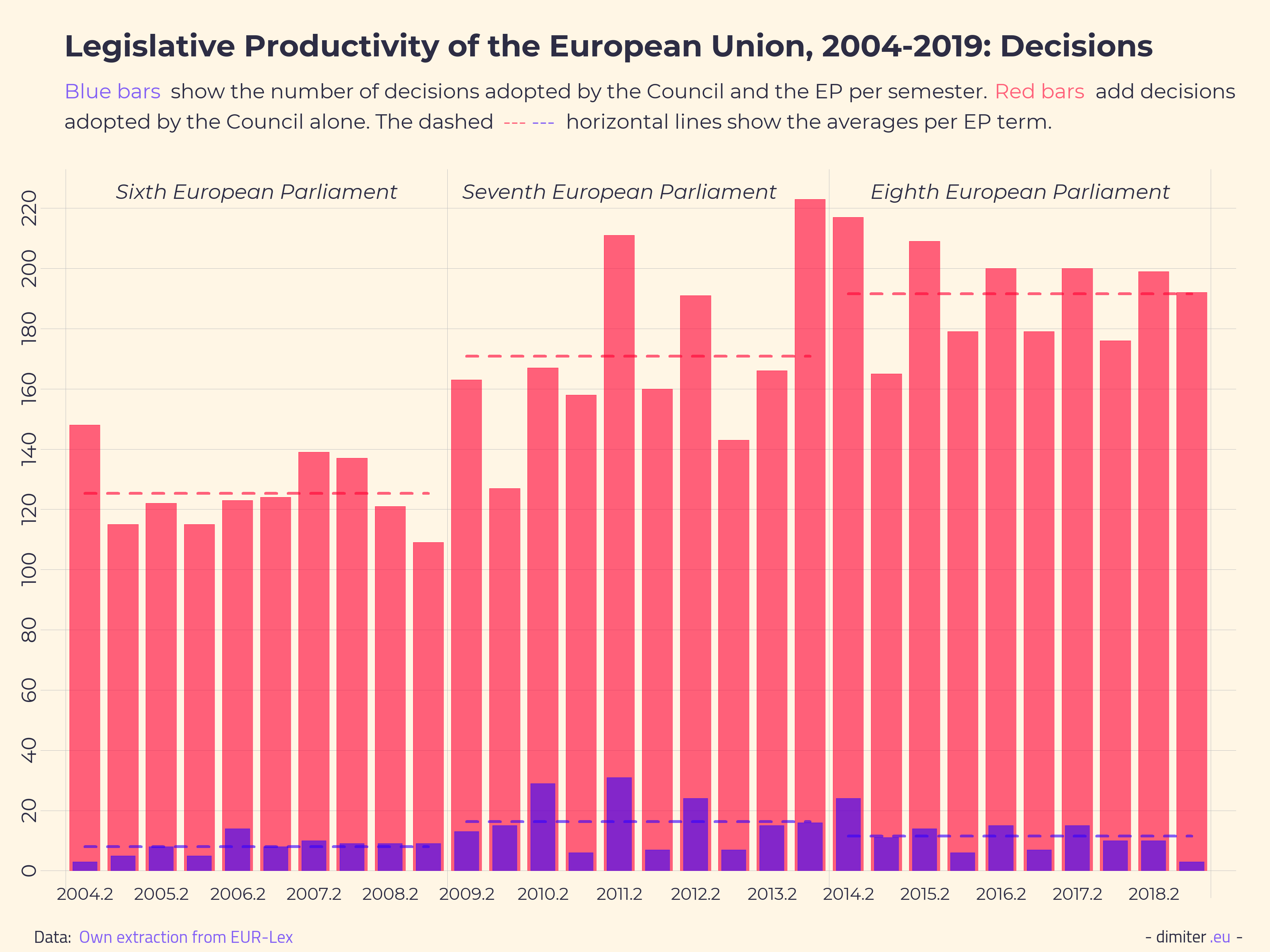

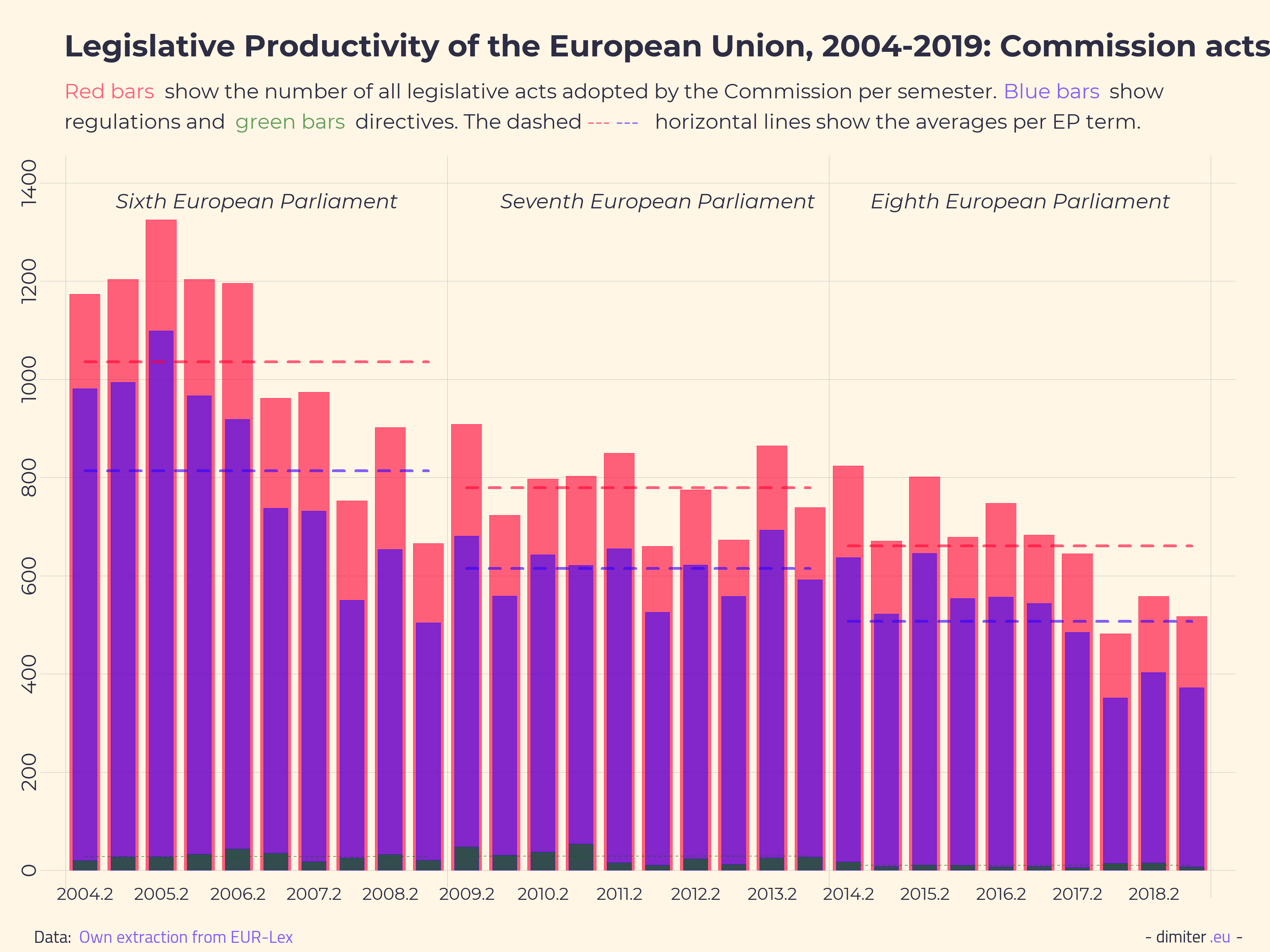
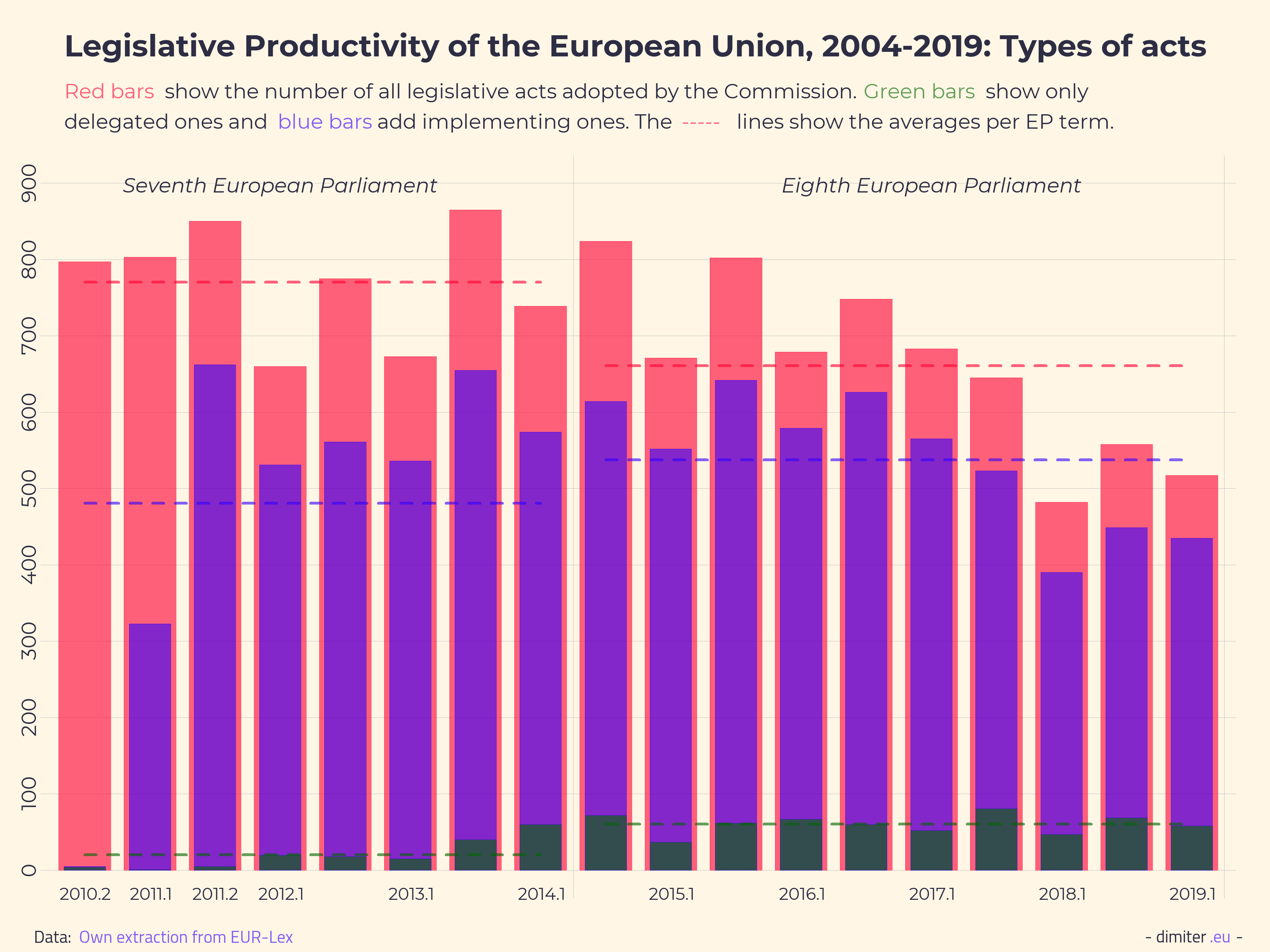
http://www.dimiter.eu/Visualizations_files/Eurlex2019.html
